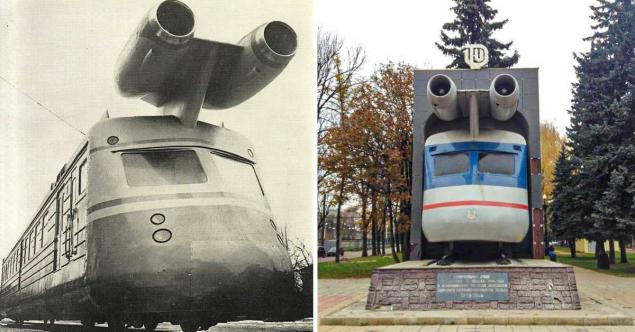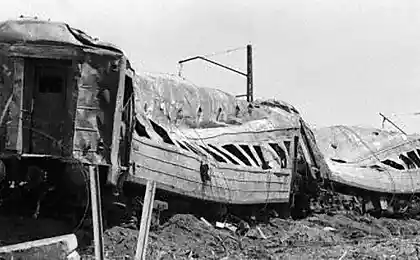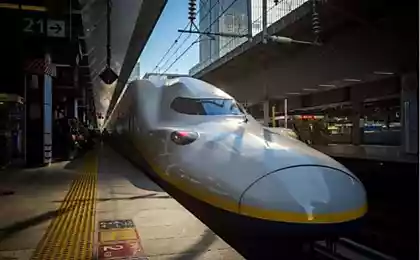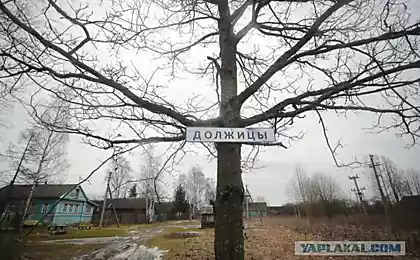155
About Soviet engineers who decided to make the first jet train in the USSR, you can make legends
The phrase "jet aircraft" entered our lives in the 40s of the last century. Jetpacks, appearing in the pages of comics, today take a real part in rescue operations on land and at sea. What about jet trains? Fantastic? Yeah, just a couple of days ago, I saw a guy like that sweep through the sands of Tatooine in Boba Fett's Book. Not only that. The fastest train in the USSR was the high-speed car-laboratory (SVL).

In the late 60s of the XX century, Soviet engineers set the task to accelerate the movement of transport on railways. As part of this program, a high-speed car-laboratory with jet engines was built at the Kalinin Car Building Plant.
View this post on Instagram
Publication from RECOUNT/SELL A CAR IN SAMAR (@blikauto_samara)
The developers wanted to know what load acts on the wheels at speeds over 200 km / h. But on this path they faced many difficulties. First, a locomotive capable of towing cars so quickly did not exist in the Soviet Union. The fastest at that time express "Aurora" drove the Czechoslovak electric locomotive ChS2m. And its maximum speed on the passport was only 180 km / h.
Secondly, it was difficult to conduct such measurements on a locomotive with a normal layout. To do this, it was necessary to exclude the influence of the drive wheels. Therefore, it was decided to make the laboratory self-propelled due to the thrust of jet engines.
View this post on Instagram
Posted by @yako.bone
There have been precedents in history. On June 21, 1931, a Zeppelin rail with a propeller set a speed record on the Berlin-Hamburg highway. And 35 years later, an American self-propelled car on the jet traction M-497 (“Black Beetle”) came to the steel tracks.
The design was based on the body of the head motor car of the Riga ER22 electric train. Added head and tail fairings and a heat-resistant roof. If you look at the photos, you can see that the driver is looking at the path through two glasses. For the sake of simplicity, the cabin, front and rear walls were not changed, but simply covered with “nozzles”.

On the roof of the car installed two turbojet engine AI-25 Zaporozhye engine plant. The same was on the passenger plane Yak-40. With a thrust of 3000 kgf, the weight of the two engines was less than a ton, which allowed us to hope to achieve the planned speed.
We add that in the cockpit had to install an aircraft control engine. And in the back of the car mounted a diesel generator to power the compressor, lighting and control automation. In the equipped condition, the SVL weighed about 60 tons. A tenth of that weight was fuel.
At the end of 1970, the jet wagon was tested. The first launches showed excellent dynamics - to a speed of 50 km / h, the experimental apparatus accelerated in 10-15 seconds.
View this post on Instagram
Posted by Rolands / #KokaGaisma (@roadkill_z)
In 1971, the Golutvin-SVL Lakes were dispersed to 187 km / h. It was no longer possible because of the curvilinear sections of the path. Therefore, the tests were transferred to the Dnieper Railway, where in February 1972 the laboratory car was able to reach a speed of 274 km / h.
The high-speed train was tested until 1975. This provided the necessary groundwork for the creation of subsequent Soviet high-speed trains - ER200 and "Russian Troika". Upon completion of the tests, the SVL stood on the outskirts of the Kalinin Carriage Plant near the Doroshikha station, gradually falling into disrepair.
View this post on Instagram
Post from Abandoned (@zabroshennoe.officialnew)
Perhaps the historical apparatus would be there now. But for the 110th anniversary of the Tver Wagon Plant, it was decided to give him a new life. The front part of the car with jet engines was restored and installed as a monument in the square opposite the TVZ complex.
View this post on Instagram
Posted by Flying Squirrel/Flyingsquirre (@flyingsquirre)
Today, the “flying train” reminds the young generation of Tver residents of the bold development of their grandfathers, which was much ahead of time and gave a tangible impetus to the development of domestic railway equipment.

In the late 60s of the XX century, Soviet engineers set the task to accelerate the movement of transport on railways. As part of this program, a high-speed car-laboratory with jet engines was built at the Kalinin Car Building Plant.
View this post on Instagram
Publication from RECOUNT/SELL A CAR IN SAMAR (@blikauto_samara)
The developers wanted to know what load acts on the wheels at speeds over 200 km / h. But on this path they faced many difficulties. First, a locomotive capable of towing cars so quickly did not exist in the Soviet Union. The fastest at that time express "Aurora" drove the Czechoslovak electric locomotive ChS2m. And its maximum speed on the passport was only 180 km / h.
Secondly, it was difficult to conduct such measurements on a locomotive with a normal layout. To do this, it was necessary to exclude the influence of the drive wheels. Therefore, it was decided to make the laboratory self-propelled due to the thrust of jet engines.
View this post on Instagram
Posted by @yako.bone
There have been precedents in history. On June 21, 1931, a Zeppelin rail with a propeller set a speed record on the Berlin-Hamburg highway. And 35 years later, an American self-propelled car on the jet traction M-497 (“Black Beetle”) came to the steel tracks.
The design was based on the body of the head motor car of the Riga ER22 electric train. Added head and tail fairings and a heat-resistant roof. If you look at the photos, you can see that the driver is looking at the path through two glasses. For the sake of simplicity, the cabin, front and rear walls were not changed, but simply covered with “nozzles”.

On the roof of the car installed two turbojet engine AI-25 Zaporozhye engine plant. The same was on the passenger plane Yak-40. With a thrust of 3000 kgf, the weight of the two engines was less than a ton, which allowed us to hope to achieve the planned speed.
We add that in the cockpit had to install an aircraft control engine. And in the back of the car mounted a diesel generator to power the compressor, lighting and control automation. In the equipped condition, the SVL weighed about 60 tons. A tenth of that weight was fuel.
At the end of 1970, the jet wagon was tested. The first launches showed excellent dynamics - to a speed of 50 km / h, the experimental apparatus accelerated in 10-15 seconds.
View this post on Instagram
Posted by Rolands / #KokaGaisma (@roadkill_z)
In 1971, the Golutvin-SVL Lakes were dispersed to 187 km / h. It was no longer possible because of the curvilinear sections of the path. Therefore, the tests were transferred to the Dnieper Railway, where in February 1972 the laboratory car was able to reach a speed of 274 km / h.
The high-speed train was tested until 1975. This provided the necessary groundwork for the creation of subsequent Soviet high-speed trains - ER200 and "Russian Troika". Upon completion of the tests, the SVL stood on the outskirts of the Kalinin Carriage Plant near the Doroshikha station, gradually falling into disrepair.
View this post on Instagram
Post from Abandoned (@zabroshennoe.officialnew)
Perhaps the historical apparatus would be there now. But for the 110th anniversary of the Tver Wagon Plant, it was decided to give him a new life. The front part of the car with jet engines was restored and installed as a monument in the square opposite the TVZ complex.
View this post on Instagram
Posted by Flying Squirrel/Flyingsquirre (@flyingsquirre)
Today, the “flying train” reminds the young generation of Tver residents of the bold development of their grandfathers, which was much ahead of time and gave a tangible impetus to the development of domestic railway equipment.
When I was left alone with three children, my hands dropped completely, but life prepared an unexpected turn for me.
My husband’s parents wanted to live in our apartment, but I don’t like it at all.























